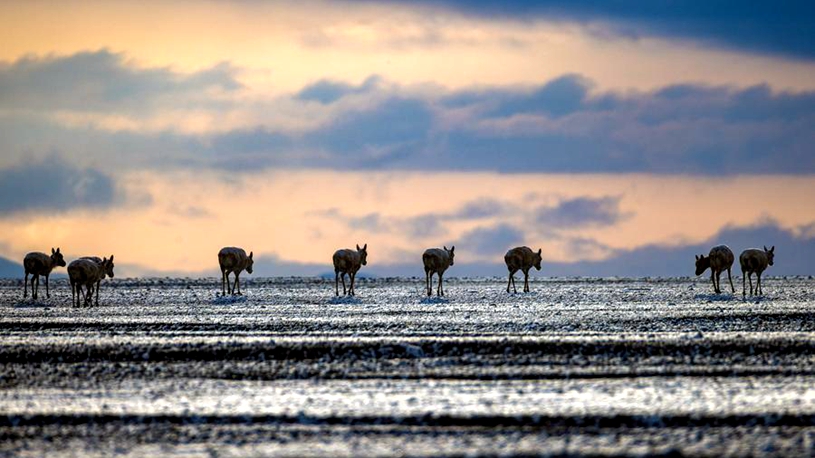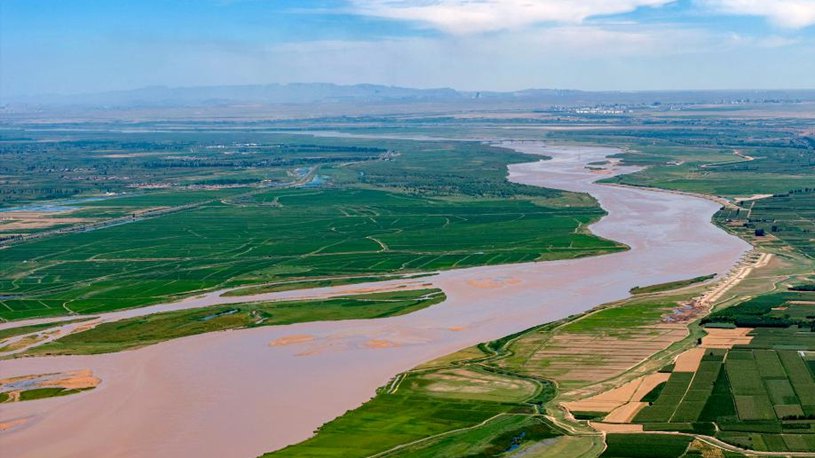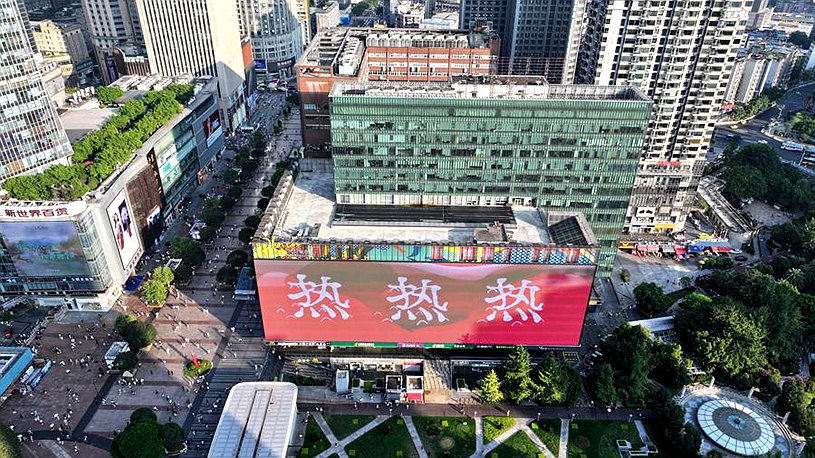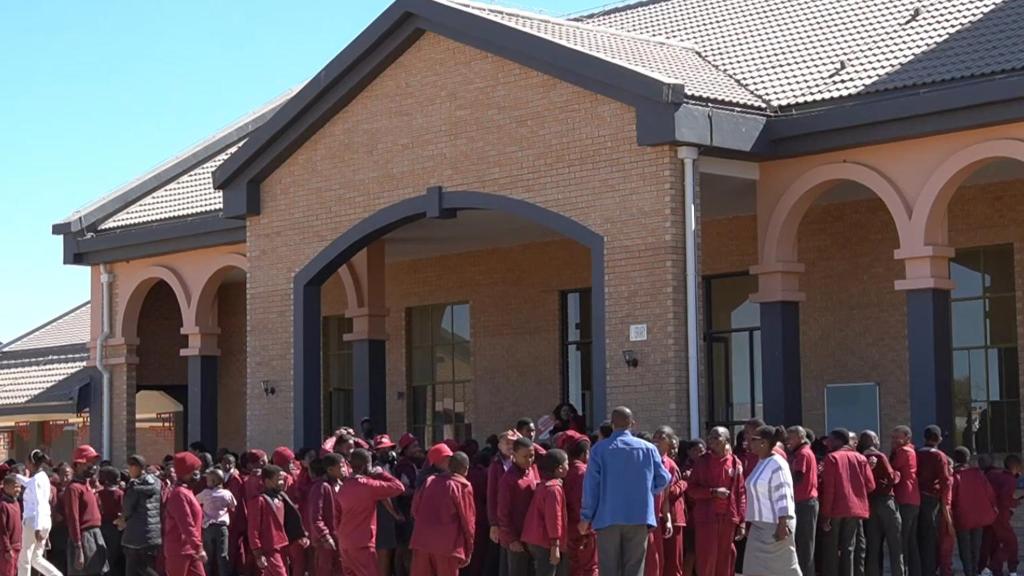More inspiring success stories are unfolding in agriculture and other areas of cooperation between China and Africa. With abundant natural resources and a large share of youth in its population, African nations are well poised to achieve food self-sufficiency, an agricultural revolution and all-round development.
by Yi Xin
From hybrid rice to flowers, from tropical agriculture to dry farming, from technology demonstration centers to poverty alleviation pilot projects, China and Africa have seen increased exchanges and fruitful achievements on agricultural cooperation since the launch of the Forum on China-Africa Cooperation (FOCAC), and in particular, since the start of the Belt and Road Initiative (BRI). Chinese crop varieties and agricultural technologies have been transported thousands of miles to the African continent, helping improve productivity and local livelihoods.
"THE HAPPINESS HERB"
Developed by the National Engineering Research Center for Juncao Technology of the Fujian Agriculture and Forestry University (FAFU) of China, Juncao technology has revolutionized mushroom cultivation for smallholder farmers by using dried, chopped grasses instead of traditional wood-based methods. With personal commitment and support from Chinese President Xi Jinping, Juncao technology has been introduced to over 100 countries and regions worldwide, and African countries have widely applied this promising, environment-friendly technology. It helps small-scale farmers develop a low-cost mushroom industry, provides sustainable livelihood options for family farmers and rural entrepreneurs, and offers a new way for developing countries to create jobs, eradicate poverty, and improve people's well-being.
In Rwanda, where Juncao is known as "the happiness herb," experts from FAFU have collaborated with the local government to promote Juncao technology and other agricultural innovations at the China-Rwanda Agriculture Technology Demonstration Center in the southern city of Huye. This innovation is more about mushroom cultivation. Benefiting over 4,000 Rwandan farmers and creating more than 30,000 jobs along the value chain, Juncao technology has helped promote food security, foster sustainable agricultural practices, and expedite the transition toward a greener economy.
A good example of Juncao technology is to be found in the Musanze district in Rwanda, where farmers have reported a significant increase in their income by selling mushrooms grown on Juncao substrates. The additional income has enabled them to invest in better education and family healthcare. Higher demands for protein-rich foods in communities have been met. What's more, the by-products of mushroom cultivation are used as organic fertilizer to improve land capability.
GREATER POTENTIAL TO BE UNLOCKED
Apart from Juncao, agricultural cooperation between China and Africa has been highly productive in many other areas:
- Enhancing food security. China produces about one-fifth of the world's food on 9 percent of its arable land. Africa, with 65 percent of the world's uncultivated land, imports nearly 30 percent of its food from other continents. China's practices in this area have proven to be valuable to Africa, and agricultural cooperation offers a path to ensuring food security for over 1.4 billion Africans. By sharing modern technologies and high-yield crop varieties, China has helped Africa increase agricultural productivity significantly.
In Uganda, where over 70 percent of the population rely on agriculture for livelihood, the China-Food and Agriculture Organization of the United Nations-Uganda South-South Cooperation Program was launched in 2012 to build capacity on poverty reduction and improve food security. Along with the introduction of new seeds and assistance from Chinese agricultural experts, rice yields in project areas have increased by approximately 400 percent, with per hectare yields rising from 1.5 tons to about 7.5 tons in a decade. In addition, China-funded training courses are being offered to local farmers in Uganda, Tanzania, Madagascar and other countries, to more than 1,500 African agricultural technicians, and to over 200 PhD candidates from 38 African countries. These efforts have significantly improved crop yields and livelihoods, and continued collaboration and innovation are key to unlocking Africa's agricultural potential.
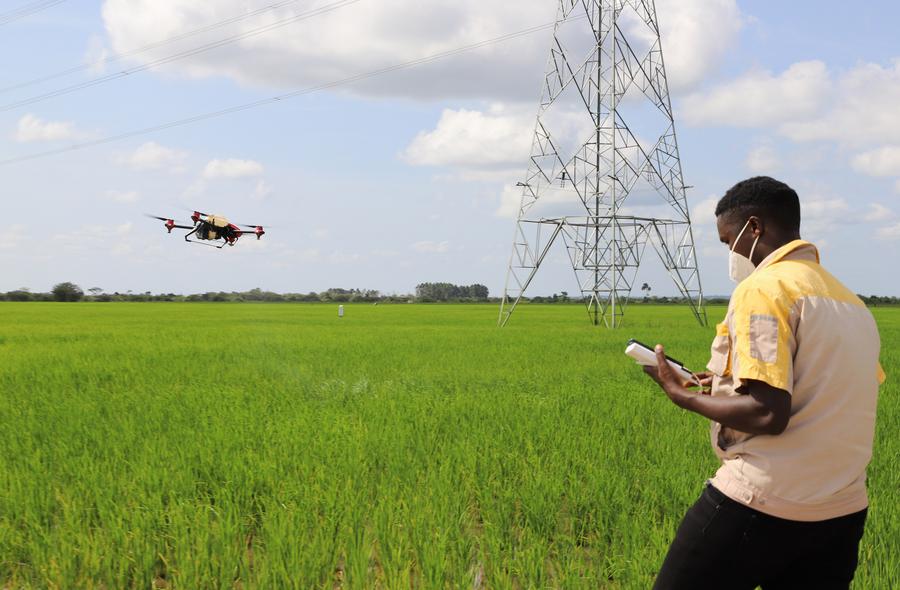
- Improving agricultural modernization. In 2023, China launched a plan to support Africa's agricultural modernization. Practical cooperation measures include establishing additional China-African centers for modern agricultural technology exchange, demonstration, and training. Another 1,000 agricultural science and management personnel will be trained for Africa before 2026.
In recent years, China has been promoting the mechanization and modernization of local agriculture in multiple African countries. In Uganda, agricultural drones have been introduced to spray pesticides. The pesticides were applied in the form of mist particles and at least 30 percent of crops have been saved. The solution facilitates crop absorption, reduces costs and minimizes environmental impact. This technology is now used on government and commercial farms and by individual farmers. In Burkina Faso, the Chinese agricultural assistance project team has organized training for technicians and farmers in rice cultivation, irrigation, and agricultural machinery across 14 provinces, helping local people improve production efficiency and increase yields and income. In the Sinai Peninsula, the Chinese water-saving terrace model has conserved water and preserved soil in mountainous areas.
- Expanding market access. Since the Eighth FOCAC Ministerial Conference in 2021, both China and Africa have been steadily advancing the forum initiatives, including the "green channel" for African agricultural products entering China. Inspection and quarantine processes have been expedited, and tariff exemptions expanded, benefiting Africa's flower industry, as well as avocado, citrus, coffee and other agricultural products.
With China's enormous demand for agricultural products and Africa's diverse agricultural output, the two sides have strengthened trade exchanges through platforms such as the African Continental Free Trade Area, the China International Import Expo, and the China-Africa Economic and Trade Expo. Both offline exhibitions and online livestreaming are available to introduce agricultural products from the distant continent to a growing number of Chinese households.
SEEDS OF PROMISE
More inspiring success stories are unfolding in agriculture and other areas of cooperation between China and Africa. With abundant natural resources and a large share of youth in its population, African nations are well poised to achieve food self-sufficiency, an agricultural revolution and all-round development. China has been synergizing the BRI and the Global Development Initiative with the African Union's Agenda 2063 and the development strategies of African countries. As China and Africa prepare for a new FOCAC summit in September, more seeds of promise have already been sown and both China and Africa are looking forward to more fruitful results.
Editor's note: Yi Xin is a Beijing-based observer of international affairs.
The views expressed in this article are those of the author and do not necessarily reflect those of Xinhua News Agency.■

